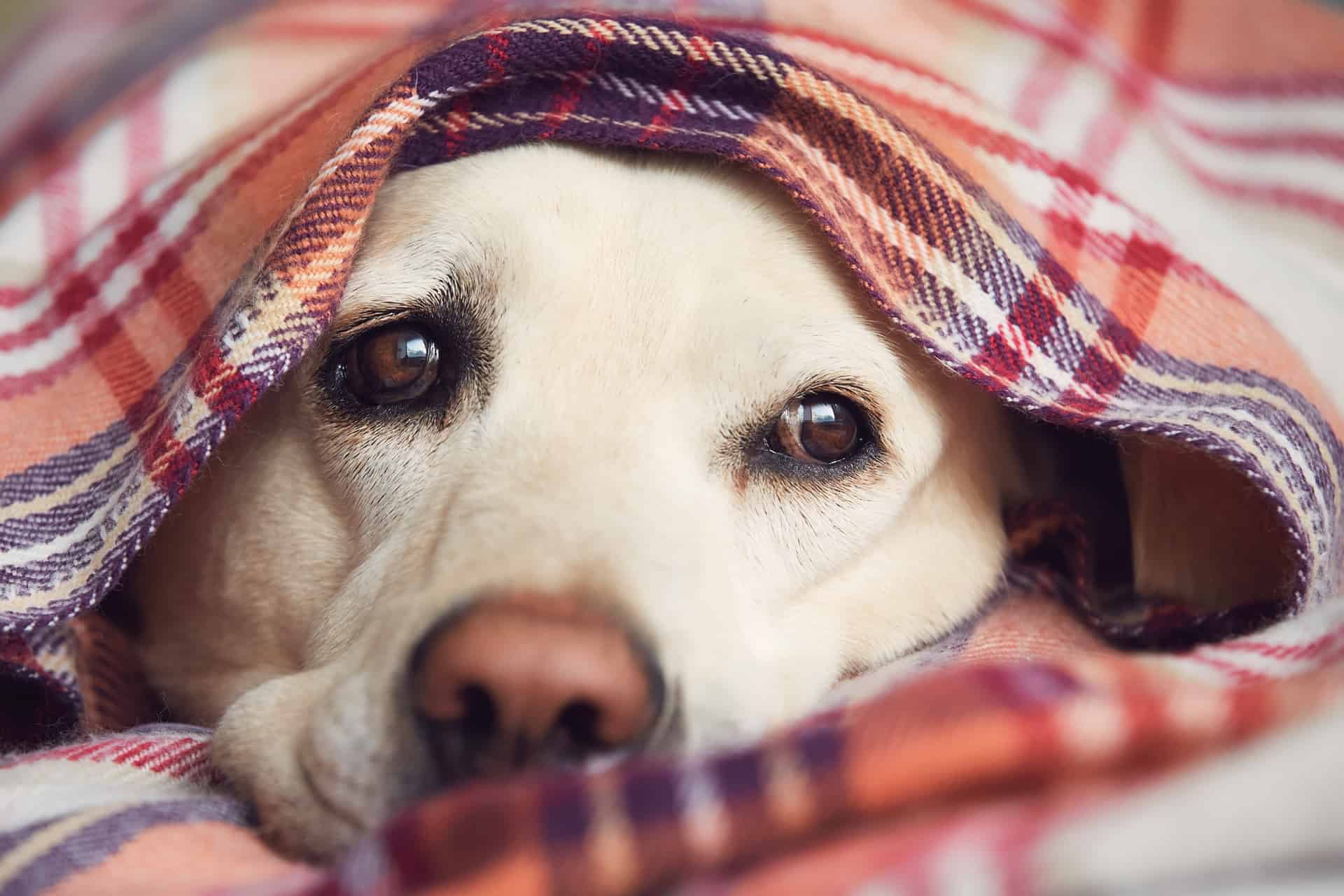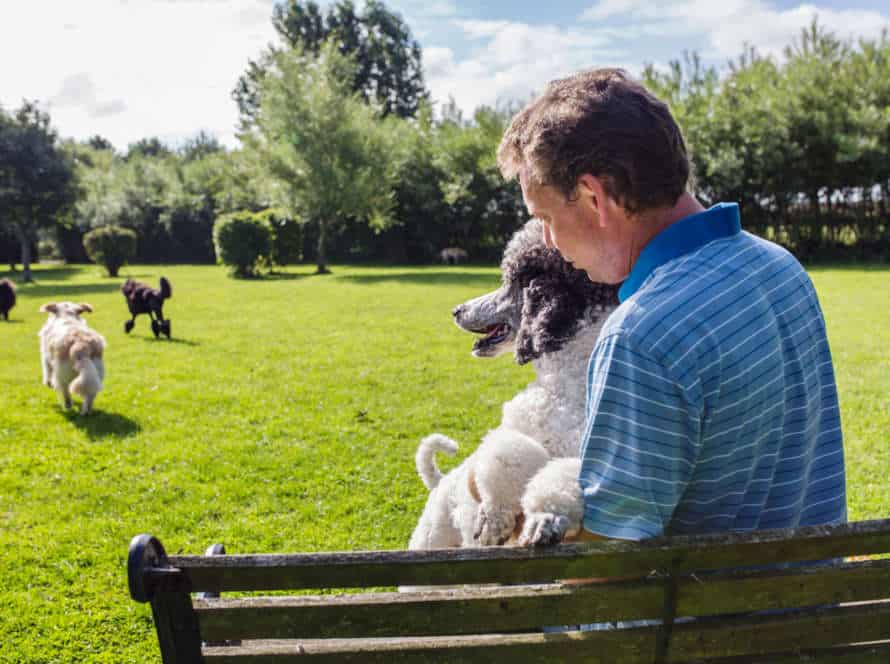Supporting Your Fearful Dog Through Life Transitions
Life transitions can be tricky for dogs, especially those with fear and anxiety. Supporting your scared pup through these changes is a must to help them feel safe and secure. Here are some ways to do this:
- Make sure to keep things as consistent as you can during the change.
- Give your pup a place to hide away from overwhelming stuff.
- Give them plenty of exercise and mental stimulation to help reduce their stress.
- Use positive reinforcement training to build their confidence and stop fear-based behaviors.
- Consider getting professional help to address any special fears or worries your pup may have during the transition.
Pro Tip: Don’t forget to give your furry friend lots of love and patience while they adjust. With the right support, your pup can deal with life changes and thrive!
Understanding Fearful Dogs and Life Transitions
Do you have a scared canine? Life changes, such as a new job or moving house, can be difficult. To help your pup, it’s key to understand their fear reactions. In this post, we’ll look at how to identify fear in a dog, and the best way to support them during life transitions.
Characteristics of fearful dogs
Comprehending the characteristics of scared dogs is essential to assist them through life changes. Doggos display a variety of behaviors due to fear and tension, like trembling, panting, drooling, concealing, and peeing or pooping. Here are the usual traits of scared doggos:
- Low patience for shift.
- Reacts to triggers, like sound or movement.
- Keep away from and hide.
- Endowment consequence (connect to familiar stuff).
- Isolation fear.
It’s crucial to identify these behaviors in your fluffy pal and give them a secure and supportive atmosphere during life changes, like moving to a new house or transitioning to a new diet. Offering positive reinforcement, presenting a sense of routine, and making a safe place can make an enormous difference to your scared companion.
Common life changes that can trigger anxiety in dogs
Dogs can feel anxious when life changes occur. Common causes of this anxiety include:
- Moving to a new house – which can be overwhelming for them because of a different routine and area.
- The addition of new family members or pets – since they may become protective of their owners in such cases.
- Loud noises like fireworks or thunderstorms – which can scare and make them anxious.
- Alterations to routine – as dogs rely on a set pattern, and any changes to it can cause worry.
- Illness, aging, or injury – physical pain or unease can cause a lot of distress.
It’s important to understand a pet’s behavior during these transitions, and to give them the support they need. Reassuring them, keeping them calm, and having a consistent routine are key.
How to identify signs of stress and anxiety in your dog
Dogs can get stressed, much like us. Not spotting signs of stress can result in health and behaviour issues.
Examples of this are:
- Excessive barking/whining
- Aggressive behaviour
- Needing attention
- Pacing/restlessness
- Licking/biting themselves
- Lacking appetite/digestive problems.
To assist your pooch through life changes, reduce anxiety and stress, these steps are recommended:
- Keep an even routine for mealtimes, walking, playtime
- Give them a secure, comforting home
- Use positive reinforcement for training
- Provide plenty of exercise and mental stimulation
- If their stress/anxiety is severe/persistent, get professional help.
Preparing for Life Transitions with Your Fearful Dog
Life changes can be hard for us humans, and for our canine pals too. For anxious or scared dogs, it can be even harder to adjust and make something positive out of those changes. Thankfully, there are some helpful ways to ease the transition for your worried pup. In this article, we’ll discuss how to get ready for life transitions with a fearful dog.
Creating a safe and comforting environment
Dogs can feel fear and anxiety when life transitions occur. Such as moving, bringing home a new pet or when their routines change. As a pet owner, you must create a safe and calming environment for your anxious pup.
Here are some ideas to help them:
- Set up a space they feel secure in. This could be a crate, bed or a room they like.
- Keep their feeding, exercise and playtime consistent. This will reduce their stress.
- Show affection and offer treats when they stay calm during the transition.
- Stay patient and relaxed. Your dog can sense when you’re stressed.
- Be consistent, understanding and patient. This will help your dog in their new environment.
Positive reinforcement training techniques for anxiety
Positive reinforcement techniques can ease anxiety in scared dogs, especially when life changes. Here are some that can help:
- Counter-conditioning: Pairing pleasant experiences (treats, toys, attention) with feared stimuli to alter their emotions.
- Desensitization: Gradually exposing the dog to fear-inducing stimuli in measured and controlled ways, reducing fear response over time.
- Clicker training: A behavior modifier using a clicker to signal desired behavior, followed by a treat or positive reinforcement.
- Target training: Trains the dog to focus on a chosen target, giving a sense of control in stressful events.
Using these techniques, scared pups can face transitions with support and positivity from their owner.
Desensitizing your dog to triggers and changes
Desensitizing your pup to stimulus and adjustments can be a great way to give your scared dog a helping hand in various life transitions. From getting used to a new house, introducing a new family member or pet, or adjusting to loud noises or unexpected events, desensitization can help ease your dog’s nervousness and stress.
Here are several suggestions for desensitizing your dog:
- Begin with low-level contact to the trigger or alteration and slowly raise the intensity as time goes by.
- Employ positive reinforcement methods such as treats, applause, or games to reward your pup for tranquil behavior.
- Stay away from punishment or negative reinforcement, which can escalate fear and anxiousness.
- Consult a professional dog trainer or behaviorist if needed to create a desensitization plan that takes into account your dog’s special needs and character.
Pro tip: Persistence and tolerance are key when desensitizing your dog. With dedication and care, you can help your four-legged friend feel more secure and content in a wide range of circumstances.
Coping with Life Transitions with Your Fearful Dog
Life transitions, such as moving to a new home, can be tough on humans. For your four-legged family member, it may be even tougher. If your dog is fearful, it can be really tricky. That’s why it’s important to support them during this difficult time.
Here are some tips and tricks to help manage life transitions with your scared pup:
Tips for managing stress and anxiety during the transition
Transition times can be tough for both pup and parent. Here are some tips to help your furry friend manage stress:
- Create a routine – Make a plan and stick to it. This can help your dog understand what to expect, reducing their stress.
- Provide a chill zone – Set up a special spot in the home where they can go to relax when things get too much.
- Use positive reinforcement – Reward your pup with treats, praise and playtime when they act confidently and bravely.
- No punishment – Don’t punish them out of fear or stress – this can have a bad psychological effect.
- Seek professional help – If you don’t see an improvement, don’t hesitate to ask for guidance from a vet behaviorist or dog trainer.
Remember – You’re not alone! Your dog is stronger than you think. With the right attitude, support and resources, they can conquer their anxiety and get back on track.
Tools and resources for calming your dog during difficult times
Having the correct tools and resources is essential to keeping your pup calm during tricky times. Especially when facing life transitions that could make them scared or anxious. Here are some tools and resources you can use to help your fearful doggo through life transitions:
- Crate or Safe Space: Create a comfy and safe area for them to feel secure and chill during stressful times.
- Calming Supplements: CBD oil and calming chews can help reduce their anxiety during hard times.
- Thundershirt or Anxiety Wrap: Special vests that give gentle pressure to decrease their stress.
- Training and Behavior Modification: Get professional help from a dog trainer or behaviorist. They will teach coping mechanisms to help them in the future.
Remember, it’s important to be understanding and patient with your scared pup. Providing them with the right support and tools will make them feel more secure.
Integrating new changes into your dog’s routine
Dogs love structure and routine. Therefore, new changes can be difficult. Here are some tips to help your anxious pup cope:
- Be relaxed and understanding. Dogs are clever and they sense when their owners are anxious. Try to stay composed when introducing changes.
- Go step by step. It’s best to introduce changes bit by bit. This gives your dog time to get used to it.
- Encourage good behaviour. Use rewards like treats and toys to make your dog feel more comfortable.
- Get help. If your dog is having trouble with changes, seek professional advice from a dog trainer or vet. They can help you create a plan to support your pup.
Professional Support for Fearful Dogs and Life Transitions
Managing fear and anxiety in dogs during life transitions can be a huge challenge for pet owners. New homes, new people and changes to the routine can make any dog anxious. Qualified canine behavior professionals can help ease these changes for your pup. Let’s explore how professional help can make the transitions easier for both you and your pup.
Consulting with a veterinary behaviorist
If your pooch is showing fearful behavior, consulting with a vet behaviorist is a great way to tackle these issues and guarantee your pet’s mental and physical wellbeing. Here are the advantages of consulting a vet behaviorist:
- Professional Evaluation: Behaviorists have the skills to evaluate your pup’s conduct, recognize the source of the worry, and create a personalized treatment plan to tackle it.
- Customized Treatment: Behaviorists can offer targeted behavioral treatments, including medication, counterconditioning, and positive reinforcement training, to aid your pet in managing their fears and anxieties.
- Support for Life Changes: Behaviorists can give assistance during life changes, such as moving, the addition or loss of a family member, or changes to everyday routines, which can aggravate your pup’s anxiety.
If your dog is demonstrating fearful behavior, consulting with a veterinary behaviorist can offer the support and guidance you require to help them conquer their issues and flourish.
Finding a qualified dog trainer or behaviorist
If your pup is experiencing fear, aggression, or separation anxiety, finding a qualified dog trainer or behaviorist is a must. They possess the skills and experience needed to help dogs learn new behaviors and tackle their worries. Here are a few tips when searching for the right trainer/behaviorist:
Opt for Positive Reinforcement Training, which encourages pets to repeat positive behaviors by offering treats, praise, or attention.
Check their Credentials – make sure the trainer/behaviorist is certified or is a part of a professional organization.
Witness a Dog Training Class – pay a visit and observe a training class. This will give you an insight into how the trainer works with pups, and if their methods are ideal for your dog.
Choosing the right trainer/behaviorist can be beneficial for your dog’s health and happiness, so take the time to find a suitable one. Pro tip: Ask for references or customer testimonials before making a decision.
Considering medication and alternative therapies for extreme anxiety
If your dog’s anxiety is extreme during life changes, think of both medication and other therapy methods as help.
Medication: Pharmaceuticals to treat canine anxiety include SSRIs, TCAs, and benzodiazepines. Work with a vet on the right dosage and watch out for side effects.
Alternative Therapies: Try acupuncture, herbal supplements, and essential oils. These can be used together with medication, to care for your pup’s anxiety in a holistic way.
Finally, both medication and other therapies can be useful when it comes to supporting dogs with intense anxiety when life changes. Work with a vet to find the best plan for your pooch.
Conclusion
In conclusion, life changes can be hard for scared pooches. Have patience and understanding when dealing with your pup’s fear reactions. Think of the ways you can help your dog get used to it, like offering comforting things they like and rewarding them. With the right help and direction, an anxious pup can learn to manage their fear and embrace life’s transitions.
Recap of strategies for supporting your fearful dog through life transitions
Helping a scared pup through life changes can be hard. But, there are things we can do to give them a sense of safety and security. Let’s go over the strategies mentioned in this article:
- Design a safe zone: Create a serene, pleasant area for your pup to hide in during upsetting times.
- Positive reinforcement training: Use positive reinforcement methods to help your pet make new, good bonds with the stuff that scares them.
- Be persistent and patient: Be calm with your pup’s progress and stay consistent to gradually build trust and confidence.
- Use natural remedies: Consider using natural solutions such as calming herbs or pheromone sprays to help them feel relaxed.
- Get expert advice: Consult with a professional dog behaviorist or teacher to make a customized plan for supporting your scared pup through transitions.
Keep in mind, each pup is unique and might need a different approach. With patience and persistence, you can help your scared pup feel better and more confident during life changes.
Final thoughts and encouragement for dog owners
To sum up, having an anxious pup can be tough. But, with patience, understanding and the right care, you can help your pooch through life’s changes and beat their anxiety.
Here are some final tips and encouragement for owners:
- Go slow and let your pup find their own rhythm.
- Rejoice in the small successes, no matter how small.
- If needed, get professional help from a vet or an experienced dog behaviorist.
- Above all, show your pup love, understanding and compassion. With that, your furry friend can not only make it, but thrive!
Pro tip: It can be demanding looking after an anxious pup. Take care of yourself and look for assistance if needed. Keep in mind, a happy owner means a contented pup.
Frequently Asked Questions
Q: What can cause a dog to become fearful during life transitions?
A: Dogs can become fearful during life transitions due to a variety of reasons including a change in routine, new people or animals in the household, and past traumatic experiences.
Q: How can I help support my fearful dog during life transitions?
A: It’s important to provide your dog with a safe and predictable environment, gradually introduce them to new people or animals, and use positive reinforcement training to help build their confidence.
Q: Should I consider medication for my fearful dog during life transitions?
A: Medication should be considered as a last resort and only prescribed by a veterinarian. It’s important to first try behavior modification techniques and create a calming environment for your dog.
Q: Can a fearful dog ever fully overcome their fears?
A: While some dogs may always have certain fears, with patience, training, and a supportive environment, many fearful dogs can learn to manage and even overcome their fears.
Q: How can I prepare my fearful dog for big life transitions like moving to a new home or having a new baby?
A: Preparation is key. Gradually introduce your dog to new situations through positive reinforcement training and provide them with a predictable routine during the transition. It may also be helpful to consult with a professional dog trainer or behaviorist.
Q: How long does it take for a fearful dog to adjust to a new situation?
A: This varies depending on the individual dog and the nature of the transition. It’s important to be patient and consistent with training and provide your dog with a calm and safe environment.







